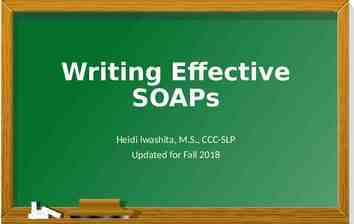Water Use Requirements January 2008 Lyndon Kelley MSU Extension/Purdue
52 Slides9.80 MB
Water Use Requirements January 2008 Lyndon Kelley MSU Extension/Purdue University Irrigation Management Educator
Prior Appropriation West of Mississippi Riparian Doctrine East of Mississippi - first in use, first in right - based on Common Law - allows transfer of water rights - handed down from British law - legal “doctrines” - interpreted by the courts sets precedents - may be modified by legislative action
Riparian Doctrine From ancient public trust doctrine Tidelands held by the king for the benefit of all English subjects Navigable lakes and streams held in trust for benefit of the people of the state Riparian rights subservient to state’s public trust authority
Who Gets Riparian Rights? Yes Owners of property actually touching the water No Everyone else May get access rights
A riparian may Use the water – bathing, domestic use, fishing, livestock watering, irrigation – subject to reasonable use Build a dock Access the entire water body Grant easements for others to gain access to the surface water
A riparian may not Sell or give away those rights – Example: drawing water to irrigate non-riparian lots Diminish rights of other riparians – Example: excessively lowering lake level through irrigation
Riparian Doctrine case law Hoover vs. Crane - 1958 Crane irrigated 50 acres from a lake that Hoover had a cottage on. During August of a dry year between evaporation and pumping the lake fell 6” to 8” impeding the use of lake for boating and swimming. State Circuit Court ruled that when the over flow of the lake stopped flowing that Crane was entitle to pump only an additional amount equivalent to 1/4” of the lake surface. Michigan Supreme Court upheld the ruling.
Riparian Doctrine Current practice Riparian owner petition Court to set lake level. Riparian owners share in cost of lake study to determine seasonal highs and lows. Court sets a lake level and low level that may trigger action. Once the lake has dropped below the trigger level riparian owner may petition to stop pumping. Court establishes an equitable use of remaining water between uses.
Riparian Doctrine, Severance Rule Once a parcel has been subdivided, the parcels no longer retaining waters edge loose their Riparian Rights. Once rights are lost they may not be regained (reattachment of subdivided parcels does not reestablish their water rights) Commonly violated, but one of the easiest Well A B C ways to get injunction against a neighbor. E F G D River
Water in the news ait w n a c s aw n l t u b , O H2 d e e n NNees s n Huma sttllees wwaat suuees e terr--uus soovver Environmentalists make new seeppe errreest Environmentalists make new strriiccti errm m i push for water protection t it tivvee push for water protection est w w o fl d l u r co e t a w s e k a Great L Is water a resource or a commodity? iinnttoo e d a w e s d e a w dg AAppppeeaallss jjuudgees sse a c e s a u c r e e t w waater us Granholm shoves after Legislature refuses to push for water laws
Annex 2001 States and provinces will manage their own in-basin withdrawals Basin-wide, resource-based standard – flexible application Each jurisdiction will commit to establishing a program, including thresholds, to manage or regulate new or increased withdrawals consistent with the standard.
New packet of Water Use Regulation for Michigan P.A 148 - Water Use Reporting - 2004 P.A. 177 – Water use conflict resolution - 2004 P.A. 33-36 of February 2006 Large Quantity withdraw requirements and meeting Great Lakes Annex expectations.
PA 177 Act 177 allows owner of a “small quantity well” to file a complaint with MDEQ (or MDA) if well: Fails to furnish normal water supply Fails to provide potable water Complainant must have a credible reason to believe that the problem is caused by a HIGH CAPACITY WELL
PA 177 In 2007 there where 13 complaints filed under Act 177, involving 6 wells in four locations 11 complaints required large volume user to pay for improvement to affected small well 1 complaint solved by farmer moving large well 1 complain was solved by homeowner paid solution
Does your well affect neighbors? Groundwater flow direction Home well Irrigation well Groundwater Flow Home well Irrigation well Zone of influence Zone of influence Home well
Water use Reporting 2006 Requirements -PA 33 -34 – Require permits for new uses over 2 million gallons per day. – Sets a performance standard for Large scale water users. ( 70 gallon / minute ) " no adverse resource impact” – Where Agriculture fits: 100,000 gal. a day 2 million gal. per day. Need to register and report , no permit required
Permit Threshold - 2 mg/d 30 day average, Common distribution system 100,000 gal./day 70 gal./min. capacity 1 million gal./day 700 gal./min. capacity 2 million gal./day 1400 gal./min. capacity 1400 gal./min. capacity at 50% use 700 gal./min. capacity
Water Use Reporting- 2004 2006 All water withdrawals with over 100,000 gallon/day capacity (70 gallons/minute) One or more well combined capacity on same or adjacent property of same owner/operator. Much the same format as 2004 and 2005 report . Addition of GPS location of Groundwater withdrawal. (latitude/longitude) within 25’ One time option to establish a baseline capacity – 2006 only option
Water Use Reporting- 2006 2006 water use reporting forms differ from previous years. 2006 use only for 2006 2007 forms may be acquired from the internet at: http://www.michigan.gov/mda/0,1607,7-125-1567 15 99 29980---,00.html Forms and useful information on the method of estimating water use are available at: www.msue.msu.edu/stjoseph click on irrigation Many MSU Extension offices and USDA service center will have forms when available.
Agriculture water use reporting to MDA only The rarely used option of reporting to MDEQ was removed in P.A. 33 leaving Michigan Department of Agriculture as the only reporting option for agricultural producers. There is ‘No Charge’ for agriculture water use reporting, a 200 annual saving over other sectors.
Static water level Reporting of static water level is no longer required. Static water level reporting was moved from a requirement to report, to a statement of when available. Static water level records are still a very effective method of monitoring well performance.
Water Use Reporting- location of Groundwater withdrawal (latitude/longitude) GPS location of groundwater withdrawal. within 25’ (latitude/longitude to 6 significant figures) Example: latitude 42.1306 , longitude -85.4701 -GPS location of withdrawal will allow mapping and analysis of effect on groundwater and stream flow Most hand held GPS unit can provide this information Latitude and longitude may be found for any location identified on aerial map from: gwmap.rsgis.msu.edu Newer well logs contain latitude and longitude information
Water Use Reporting- location of Groundwater withdrawal. (latitude/longitude) gwmap.rsgis.msu.edu
Methods of Estimating Water Use water application multiplied by # of applications, plus estimate of additional water use (Acre Inches) pump capacity multiplied by run time: or fuel/power use per hour flow meter: meters actual flow, note maintenance and calibration concerns industry average numbers (Midwest Plan Service or ASAE) with appropriate adjustments (not appropriate for high variable water uses such as irrigation).
Example: Acre Inches Joe farmer has a 160 acre field with 142 actual irrigated acres. He applied .75 inches of water at each application. One application was made in June and 3 during July and 3 in August. Month Number of Appl. Rate in Inches Irrigated acres Water Use June 1 .75 142 106.5 Acre inches. July 3 .75 142 319.5 Acre inches. August 3 .75 142 319.5 Acre inches. Total 745.5 Acre inches. 1 acre inch 27,154 gallons (745.5 Acre inches) 27,154 gallons 20,243,307 gallons
Pump capacity multiplied by run time Larry monitors the hour meter to track maintenance needs and now water use. Larry checked his pumping capacity multiplied by his average run time to irrigate one inch water on a field (1” on 72 acre in 60 hrs) against the total irrigated gallon needed to apply an inch of water to that field and found the to be very close at (543 gal/min.). Month Hours of run time. Pumping Rate June 70 33,000 gal /hour 2,310,000 gallons July 210 33,000 gal /hour 6,930,000 gallons August 200 33,000 gal /hour 6,600,000 gallons Total Water Use 15,840,000 gallons
Baseline Capacity – 2006 one time opportunity “Baseline Capacity” - Rated capacity of the system as of February 28, 2006, reported as pump capacity in gal/min. Water withdrawal prior to February 2006 are granted a rebuttable presumption of no "adverse resource impact.”
Baseline Capacity – did you miss this one ? Increasing a water withdrawal by more than 70 gal./min. beyond the baseline, constitutes a new water withdrawal, loosing the rebuttable presumption of no "adverse resource impact” If no “Baseline Capacity” volume was record in 2006, your 2004-2005 records will be used to determine a baseline. Most farmers rated pump capacity is far greater than their water use in 2004 or 2005.
New vs. Old Water Withdrawals Old water withdrawal have a rebuttable presumption of no "adverse resource impact” withdrawal must be established prior to February 28th of 2006 Properly registered and have reported Not expanded by 70 gpm New water withdrawals; must meet the no "adverse resource impact” standard Compete for the water available after old withdrawal, fire, municipal and clean-up water uses.
Registration of New Withdrawals Required prior to use for withdrawal established after Feb. 28, 2006 Form available from MDA at. http://www.michigan.gov/mda/0,1607,7-12 5-1567 1599 29980---,00.html
Trout streams Provision ends April 2008 will be replaced by performance standard “no adverse resource impact”
PA 33 - 34 Trout stream protection (through Feb. 2008) replaced by standard “no adverse resource impact” – Required either Permit for new wells located within 1320 ft of designated trout stream Or Placement of wells 150 ft deep (top of screen) And/Or Proof that flow will not be drawn below 50% of the 5 year seasonal low flow
What is an adverse resource impact. A Holistic system of defining adverse resource impact that is being discussed is fish species as an indicator of quality of the habitat. Each water body has a designated fish species User cannot lower the flow lower than predicted minimum flow for habitat for the fish species the resource (stream) is designated for.
324.32721 Large quantity withdrawal; prohibitions. (1) A person shall not make a new or increased large quantity withdrawal from the waters of the state that causes an adverse resource impact to a designated trout stream. (2) Beginning 2 years after the effective date (Feb. 28, 2008) of the amendatory act that added this section, a person shall not make a new or increased large quantity withdrawal from the waters of the state that causes an adverse resource impact. (3) This section does not apply to the baseline capacity of a large quantity withdrawal or a well capable of making a large quantity withdrawal that existed on the effective date of the amendatory act that added this section. (4) This section does not apply to a withdrawal that is utilized solely for fire suppression. History: Add. 2006, Act 33, Imd. Eff. Feb. 28, 2006 Popular name: Act 451 Michigan Compiled Laws, Legislative Council, State of Michigan
324.32722 Presumption. (for new withdrawals) (1) Until a water withdrawal assessment tool becomes effective upon legislative enactment pursuant to the recommendations of the groundwater conservation advisory council under section 32803, there is a rebuttable presumption that a new or increased large quantity withdrawal will not cause an adverse resource impact in violation of section 32721 under either of the following circumstances: (a) The location of the withdrawal is more than 1,320 feet from the banks of a designated trout stream. (b) The withdrawal depth of the well is at least 150 feet. (2) A presumption under subsection (1) may be rebutted by a preponderance of evidence that a new or increased large quantity withdrawal from the waters of the state has caused or is likely to cause an adverse resource impact. History: Add. 2006, Act 33, Imd. Eff. Feb. 28, 2006.Popular name: Act 451 Michigan Compiled Laws, Legislative Council, State of Michigan
PA 33 Allow a person who intended to make a new or increased large quantity withdrawal for which a permit was not required to petition the DEQ for a determination that the withdrawal would not cause an adverse resource impact; and prescribe a 5,000 petition fee.
PA 33 of 2006 Prohibit a local unit of government from enacting or enforcing an ordinance that regulated an adverse resource impact caused by a large quantity withdrawal.
PA 37 Encourage large-quantity users in a watershed to form a water users committee through which the DEQ could facilitate the resolution of a situation in which a withdrawal caused an adverse resource impact.
What do you need for a new large capacity withdrawal? Few agricultural user will need a permit. ( 1400 gpm, common distribution system, 90 day average) All new large capacity withdrawal constructed after February 2006 are required to register prior to use and report their monthly water use. Forms may be acquired from the internet at: http://www.michigan.gov/mda/0,1607,7-125-1567 1599 29980 ---,00.html Through February of 2008 you need to be aware of the trout stream provision if applicable. All large capacity users need to meet the no adverse resource impact clause for withdrawal constructed after February 2006.
Large Volume Water Use Assessment Tool Estimates the potential impact of a proposed large volume water withdrawal to the fish population in near by creek, steam or river. Report to legislature July 2007 Available by February 28, 2008 Search DEQ website for “ large volume water use assessment tool” New legislation pending
Large Scale Water Use Assessment Tool Existing water withdrawals exist in the tool only to the degree that they affect the average of stream of that size in the State. Tools will show water available when existing use have used all that is available. Tool treats all surface water withdrawal as directly from the closest stream - recharge pond problems.
Maximum water use allowed C cut off - in gallon per minute: 157 gpm 278 gpm 36 gpm 565 gpm
Maximum water use allowed C cut off - in gallon per minute: 102 gpm 157 gpm 14 gpm 2950 gpm

























































